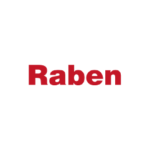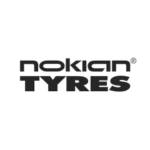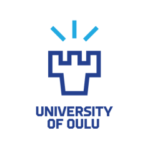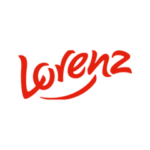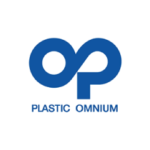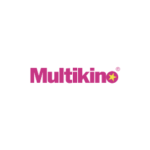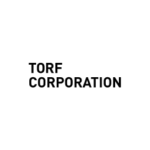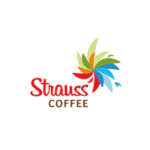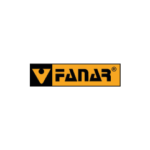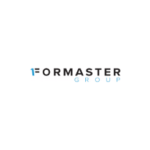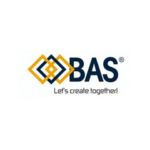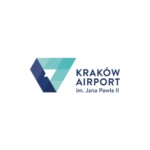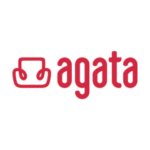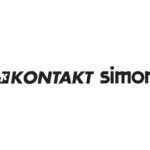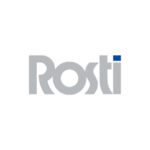The new version of XPRIMER includes changes in the production and personnel management area, as well as functional improvements. We have introduced a new XPRIMER.TCS module to support the toolroom operation and expanded the modules for technology management and IoT, among others. Also noteworthy is the XPRIMER.WFA module, i.e. working time planning based on advanced algorithms. We have also improved and developed the mobile application.
The new version of the XPRIMER 5.2 platform has many new features and improvements. I sincerely hope that most of them will soon find their practical application in our customers’ organisations. We have been driven by the same goal we have been pursuing for years: to create solutions that meet real business needs and face the challenges set by the market.
Michał Lach, president of eq system
In the new version, we have added the possibility to present the XPRIMER user interface in different languages – both in the web interface, kiosks and terminals and the mobile application. Polish and English are available as standard, and Finnish translations for some of the system’s functionality are available under an additional licence. The system has been developed to make the interface available in other languages with as little effort as possible.
We have carried out a number of works to improve the security of the system. Among other things, we have added the possibility to configure two-factor authentication, which is by far the best way to protect against most user password attacks. We have also improved system security in many other areas.
Due to increasing digitalisation, the amount of data collected and processed is growing at an exponential rate. With increasing frequency, the data is the basis for business decisions in a company, which translates into an rise in threats and requirements in the cyber security domain. Besides developing the functional capabilities of the XPRIMER platform, we have therefore focused on this aspect in particular. Our internal work in identifying and eliminating vulnerabilities, was supported by the expertise of external experts, and the system itself was subjected to double penetration testing. In addition to the tangible effect of increasing the system’s compliance level with the OWASP standard, we learned many lessons about security design and testing, which will benefit when working on future versions of the system.
Jacek Czeremcha, vice-president of eq system technology
Innovations and changes in the area of WFM (Workforce Management)
Changes made in 5.2 version of XPRIMER in the area of Workforce Management include primarily an improvement of the automatic roster planning capability, new functionalities in the mobile application, changes to XPRIMER.PAYROLL and adapting to changing Labour Code regulations in the area of remote working and those related to the implementation of EU directives on work-life balance for parents and carers and the directive on transparent and predictable working conditions in the European Union.
In the XPRIMER version 5.2, the automatic schedule planning functionality has been enhanced with the possibility of defining scenarios and strategies containing any number of planning steps. The planning process considers the competences of employees, and new parameters and functions have been added to facilitate the design and running of planning scenarios. The possibility to run planning for any date range, e.g. a month, a week or any accounting period was added from the position of a single window. The option to create steps and conditional strategies has been added too.
For our clients, one of the significant benefits of time scheduling based on advanced algorithms is the fulfilment of organisational goals, achieved, among other things, by ensuring that the right staff with the right competences for the task is available at the right place at the right time. Staffing balancing based on knowledge of actual staffing requirements also translates into a significant reduction in the time needed to prepare the work plan, greater flexibility and rapid adaptation to dynamically changing work demands. There is also the benefit of saving time for managers, who can concentrate on the tasks assigned to them based on their positions. The changing approach of legislators to employee welfare has been reflected in the ability of working time scheduling algorithms to take into account: roster requests, employee availability, holiday plans and other elements related to providing the employee with the best possible work-life balance.
Tomasz Jeleń, eq system expert
Among the wide range of functionalities of the mobile application, new mobile transactions have been added in version 5.2. These include an employee’s availability statement, roster requests, childcare statements and a request for a change of personal data.
The ability to manage temporary employees has been added in version 5.2. The system checks and prevents exceeding the duration limit of contracts concluded with these employees, and sets and calculates notice periods accordingly. Holiday entitlement is automatically calculated in accordance with the applicable rules. XPRIMER also has the possibility of keeping records of temporary employees from a temporary work agency perspective, i.e. among other things: records of companies leasing a given employee employed in temp agencies, calculation of remuneration, preparation of personal income tax and social security (ZUS) declarations, etc.
The changes made to the mobile app fit perfectly with the multigenerational and multicultural labour market. Customers expect solutions that allow them to build two-way communication with employees efficiently. Apparently minor functionalities, such as the ability to declare childcare or waive this right, are of great importance to HR departments, as they unlock further areas of HR processes by putting them in employees’ hands. This has a considerable impact in diversifying tasks and thus stimulating interaction between employees as users, by providing a transparent system that operates according to clear and readable rules.
In my opinion, version 5.2 is a change driven by the increasing ‘client-centricity’ of the XPRIMER platform, where clients and their businesses set the rhythm of system development. Multilingualism, the possibility to manage temporary employees or, for example, support for mobile working time schedules, is a reflection of what is currently happening in the extremely dynamic area of Human Resources.
Błażej Migoń, eq system expert
Innovations and developments in the area of MOM (Manufacturing Operations Management)
Version 5.2 of the XPRIMER platform introduces a number of significant changes in the MOM area, which contribute to streamlining production processes. We are committed to ensuring that our customers use the XPRIMER platform to support all possible production processes and gain added value by ensuring a smooth flow of information between the different areas.
One of the main changes is the extension of the XPRIMER.IoT module to include a microservice responsible for communicating with machines/equipment via an OPC UA server. The solution is based on a communication standard that is provided and maintained by the OPC FOUNDATION. The mission of this organisation is to provide extensive interoperability in the field of automation by creating and maintaining an open communication standard that enables the transfer of process data, alarm and event data, historical data and batch data to devices from different manufacturers. This significantly increases the amount of data available to the XPRIMER system, and this enables more precise monitoring of production processes, reduction of losses and improvement of plan execution. The communication available in the XPRIMER system within version 5.2 is one-sided, i.e. it is possible to read data from the OPC server and process it in the system and write it to the database.
Within version 5.2, functionality has also been added to manage production execution using defined production technologies. The functionality related to generating production orders and operations is based on technologies defined in the system via the XPRIMER.TCW module. It enables the generation of production orders and operations together with a BOM list when entering or importing sales orders and production orders in the XPRIMER system. To better visualise the defined technology, to capture the links between technologies, a tree view has been added, which shows the structure of the technology and the product assigned to it.
Manufacturing companies struggle with the source of technological and organisational data. They keep them in various places: ERP databases, EX databases, paper manuals, etc. Often, the transparency, detail, completeness of the data raises huge objections, which sometimes even makes it impossible to digitise the information flow process. We increasingly provide customers with a comprehensive TCW solution for efficient management of technological data. Not only technological, but also organisational, which describes production logistics to such an extent that the production control process can be automated. Achieving data security is also of paramount importance: database solution, history of changes, descriptions of causes, versioning, broad authorisation model. Of course, the solution is compatible with our other systems such as APS, MES. An additional valuable feature is the connection to the TMC module, in which we can determine the cost of production or simulate its volume by applying various technological variants. The TCW and TMC modules, based, of course, on the XPRIMER platform, fit perfectly into the comprehensiveness model of the MOM area.
Dariusz Kacperczyk, advisor to the eq system management board
The new XPRIMER.TCS module allows efficient management of tools used in production – it collects all data on tools/machine tooling and allows mapping of tool inventory, divided into tracked (to the piece) and non-tracked tools. From the terminal or mobile application, it is possible to supervise and implement fast and efficient tool issue and receipt, control their location and verify their degree of wear based on data from the XPRIMER.MES. The XPRIMER.TCS module also manages tool reconditioning, calibration/legalisation. This streamlines the entire tool handling process and eliminates the circulation of paper documents.
The XPRIMER.TCS toolroom management module allows the organisation to improve the efficiency of tool and tooling utilisation, better monitor tool condition and tool life, and manage tool reconditioning, calibration or decommissioning processes. The use of the TCS module brings many tangible benefits to our customers. Firstly, there are savings, as employees take greater care of the tools entrusted to them when they know that their use is meticulously monitored. Secondly, thanks to the exchange of information between TCS and ASPROVA APS, the reliability and feasibility of production plans is increased, and thus the on-time execution of orders. Thirdly – it is easier to calculate production costs, as information is available on actual tool wear, necessary reconditioning/calibration/legalisation. In addition, complete traceability is ensured.
Artur Głodek, eq system expert
XPRIMER 5.2 also includes a number of other changes to the MES, CMMS or TRC modules. One of them is the upgrade of all available transactions to the new components, which allows customers to use the new functionalities contained in them, including the possibility to work via two accesses: a terminal (browser) and a mobile application. To reduce the cost of upgrading transactions to the new components for customers who have older versions of transactions, there is a mechanism to enable automatic upgrades, which speeds up the process significantly.
Many of the new functionalities in version 5.2 of XPRIMER translate into the elimination of wastage in production. Quick access to information and the possibility of reporting on production from mobile devices, a mobile application for toolroom management processes are additions to the mobility provided in previous versions of the platform in the areas of maintenance (CMMS) or employee self-service (HRM). Mobility in this case is a powerful time-saver in many different production and production-related processes, but also, above all, an improvement in internal communication. Information reaches the right addressees faster, so the company is able to react to changes both internally and externally faster. In turn, the development of IoT-related functionalities gives greater precision to data and eliminates the risk of errors. In XPRIMER 5.2, we have a great deal of freedom to configure the data flow directly from the machines thanks to the use of the OPC UA standard.
Michał Żelichowski, eq system expert















